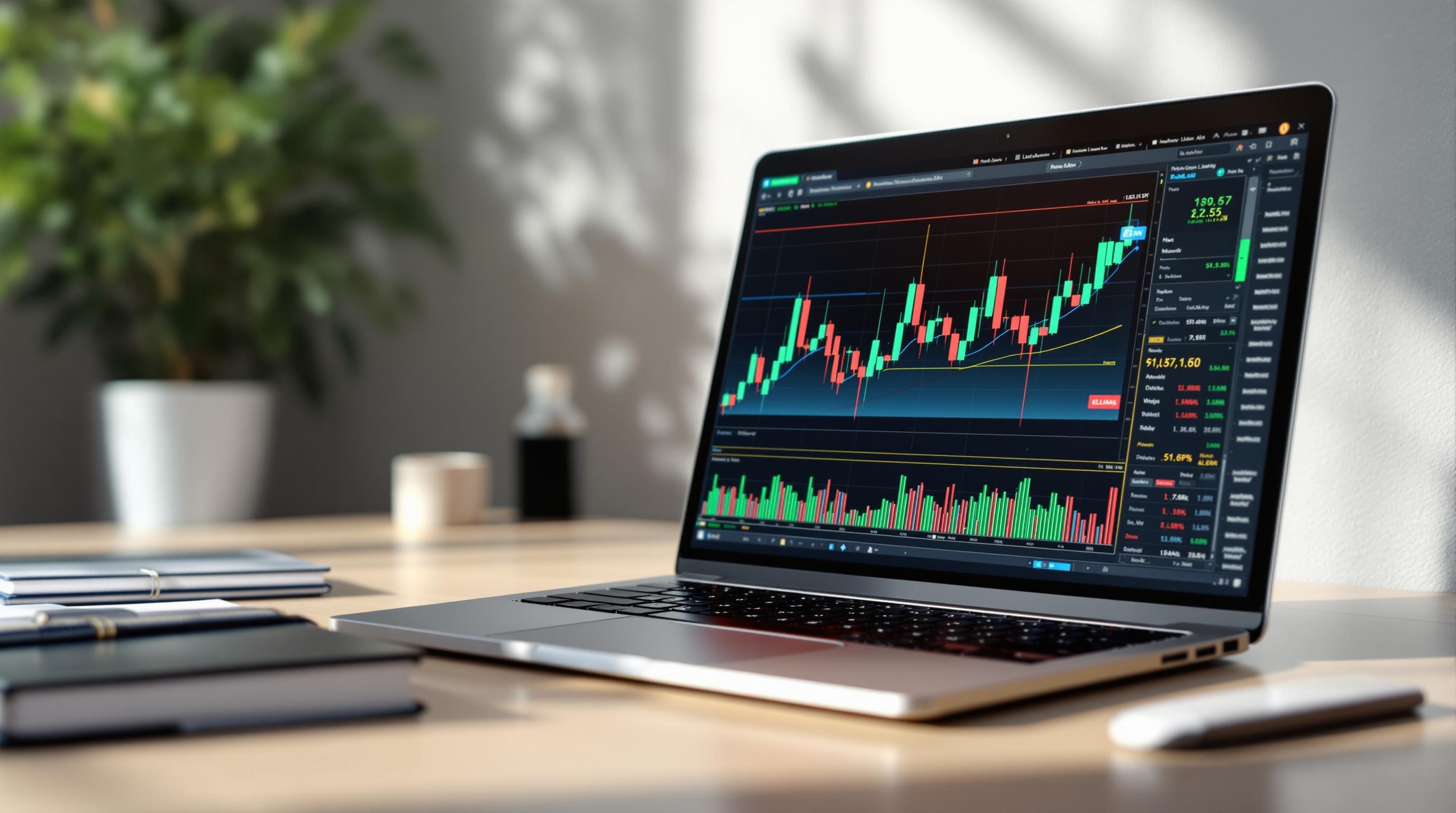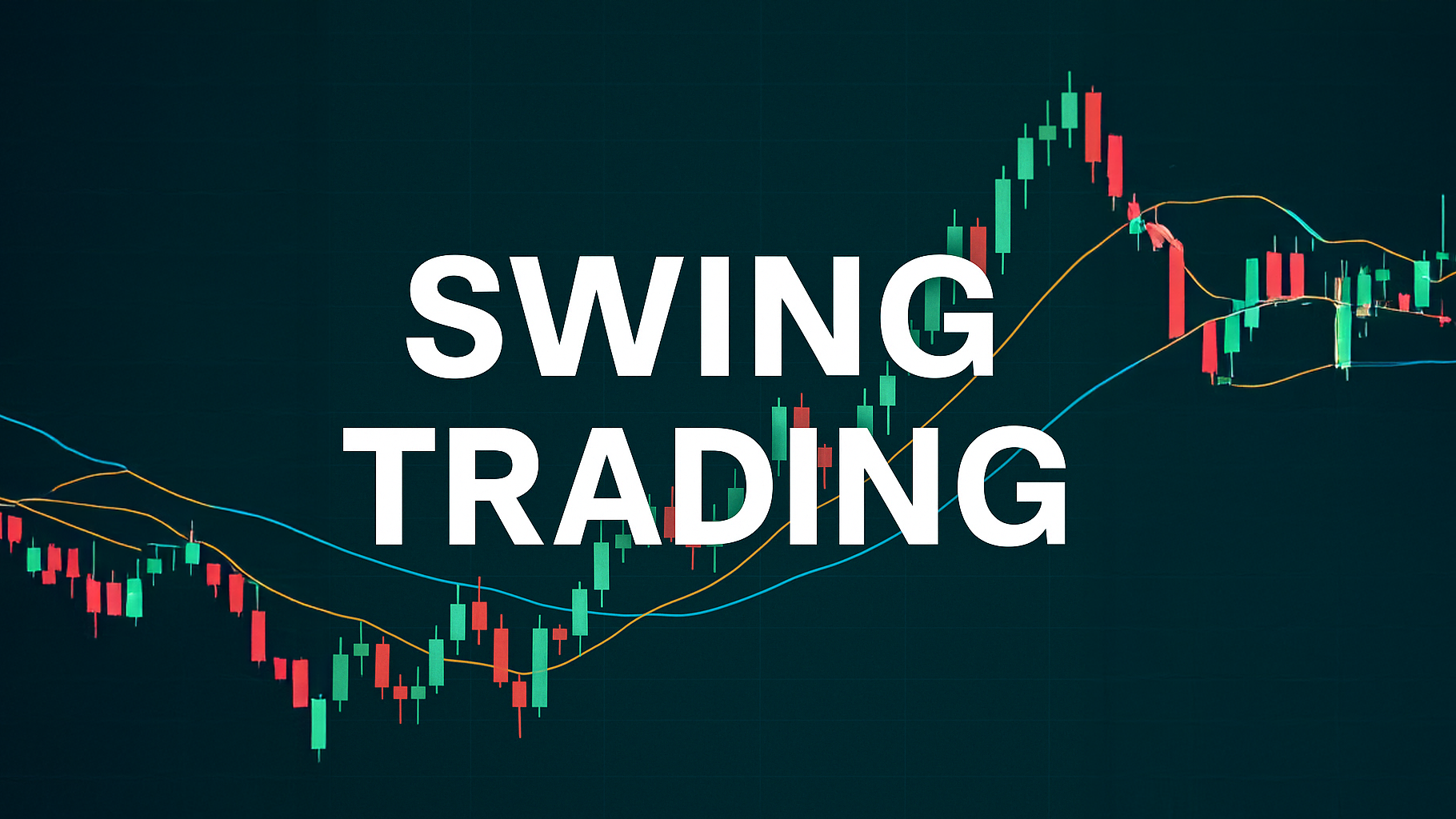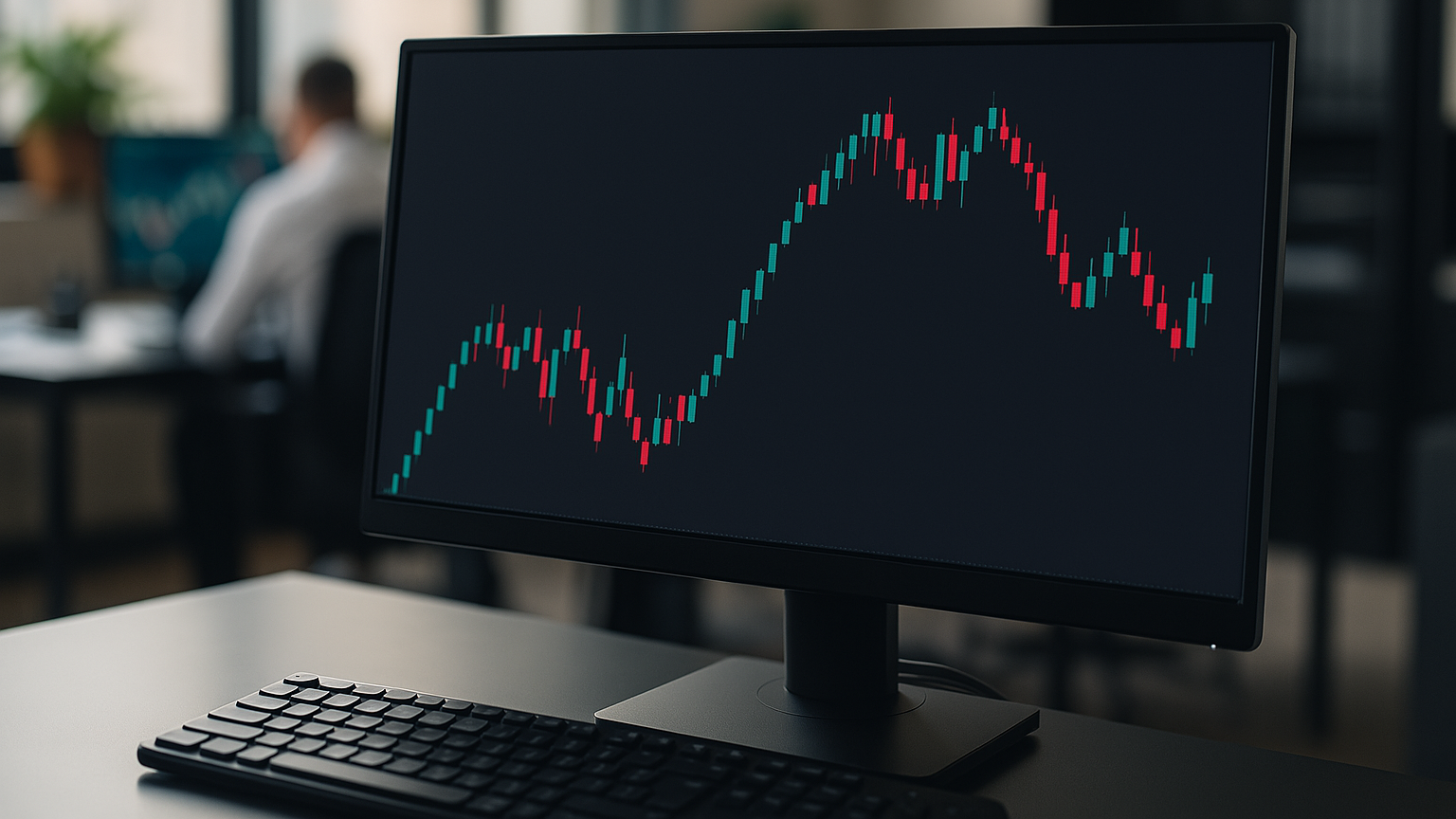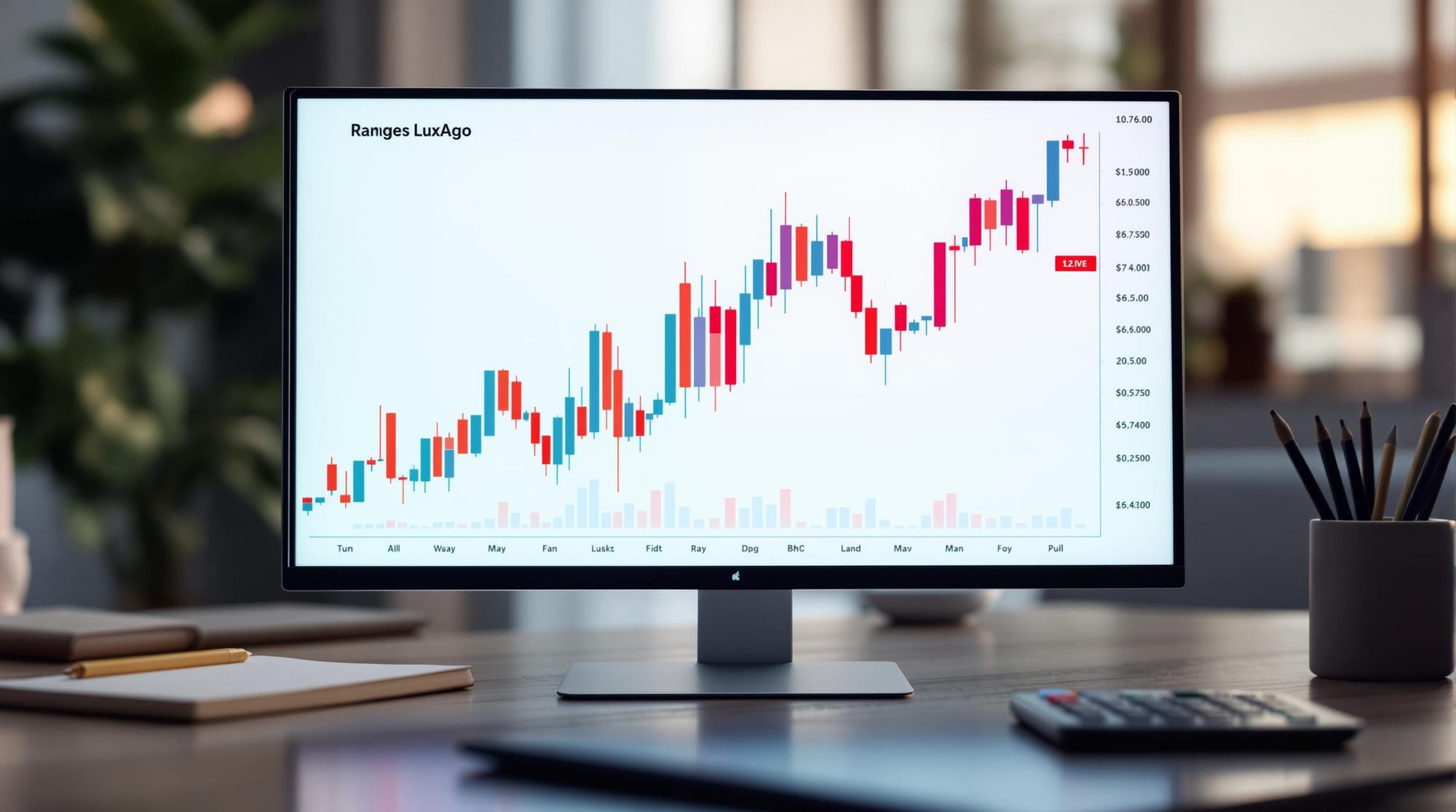Master Elliott Wave Theory to analyze market trends and psychology, enhancing your trading strategy with wave patterns and Fibonacci tools.
Elliott Wave Theory helps traders understand market trends and psychology by analyzing recurring wave patterns. It divides market movements into 5‐wave impulse patterns (following the trend) and 3‐wave corrective patterns (moving against the trend). These waves reflect shifts in optimism and pessimism, making them useful for predicting price movements across various timeframes.
Key Takeaways:
- Impulse Waves: 5 waves in the trend's direction, with specific rules (e.g., Wave 3 is usually the strongest).
- Corrective Waves: 3 waves (A-B-C) moving against the trend.
- Fractal Nature: Patterns repeat across different timeframes (minutes to decades).
- Practical Use: Identify trends, set stop-loss points, and understand market sentiment.
Learn how to spot these patterns on charts, use Fibonacci levels for precision, and avoid common mistakes like over-analyzing or ignoring volume signals. Elliott Wave Theory works in all liquid markets, including stocks and forex, and is a valuable approach for beginners looking to improve their trading strategy.
Elliott Wave Theory for Beginners | ULTIMATE In-Depth Guide!
Main Rules of Elliott Wave Analysis
Let’s break down the essentials of Elliott Wave Analysis. These rules turn theoretical wave patterns into practical methods for market analysis.
5-Wave and 3-Wave Patterns
Impulse waves follow a strict set of guidelines: Wave 2 cannot retrace 100% of Wave 1, Wave 3 is usually the longest wave, and Wave 4 must not overlap the price territory of Wave 1 (except in specific cases like diagonal triangles) [1] [2].
Here’s how a complete impulse pattern unfolds:
- Wave 1: The initial upward move that starts the trend.
- Wave 2: Retraces up to 61.8% of Wave 1 but never goes beyond it [2].
- Wave 3: The strongest wave, often the longest, but it’s never the shortest when compared to Waves 1 and 5 [2].
- Wave 4: Retraces about 38.2% of Wave 3 without entering Wave 1's price range (except in diagonal triangles) [2].
- Wave 5: Marks the final push in the trend direction, often showing reduced momentum.
Market Psychology in Waves
Each wave reflects specific market emotions, mirroring crowd behavior. Here's how sentiment shifts across the waves:
| Wave | Market Sentiment | Common Trader Behavior |
|---|---|---|
| Wave 1 | Optimism begins | Early adopters step in |
| Wave 2 | Doubt and hesitation | Traders take profits |
| Wave 3 | Confidence grows | Large-scale participation |
| Wave 4 | Caution and uncertainty | Market consolidates |
| Wave 5 | Overconfidence | Traders flood the market |
Wave Patterns Within Waves
Elliott waves are fractal, meaning each wave contains smaller waves that follow the same 5-3 structure [1] [2]. Analysts like Robert Prechter have leveraged these fractal patterns to predict major market events, including the 2008 financial crisis [4].
Reading Wave Patterns on Price Charts
Identifying Elliott Wave patterns on price charts takes a close look at specific rules and characteristics. Here's how you can spot these patterns in real market conditions.
Finding 5-Wave Trends
Start by locating Wave 3, as it's usually the strongest wave, marked by high volume and strong momentum.
Key checkpoints for Wave 3 and Wave 5:
| Wave | Price Action |
|---|---|
| Wave 3 | Extends 161.8% beyond Wave 1 |
| Wave 5 | Shows weaker momentum compared to Wave 3 |
After identifying the impulse waves, shift your focus to the characteristics of corrective patterns.
Spotting 3-Wave Corrections
Three-wave corrections (A-B-C patterns) move in the opposite direction of the main trend and are distinct from 5-wave patterns. Typically, Wave B retraces about 50% to 61.8% of Wave A [8].
You'll also notice that corrective waves generally come with lower volume compared to the preceding trend [5] [8].
Wave Marking Guidelines
When marking waves, stick to these essential rules:
- Start with weekly charts: If you're new, begin by analyzing weekly charts before moving to daily timeframes. This approach reduces the chances of misidentifying patterns [5].
- Alternation Principle: Waves 2 and 4 should differ in form. For instance, if Wave 2 is a sharp correction, expect Wave 4 to develop as a sideways pattern, or vice versa [5] [8]. This variation reflects shifts in market sentiment, alternating between quick reactions and prolonged indecision.
Trading with Elliott Waves
Once you've identified valid wave patterns using the marking guidelines, you can apply these trading strategies to make informed decisions.
Trade Entry and Exit Points
Wave patterns provide clear opportunities for entering trades, especially at the end of corrective waves. The best entry points are often at the completion of waves 2 and 4, positioning you to benefit from the strong movements of wave 3 or wave 5.
| Entry Point | Stop-Loss Placement |
|---|---|
| Completion of Wave 2 | Below the low of Wave 2 |
| Completion of Wave 4 | Below the low of Wave 4 |
For exits, consider taking partial profits during wave 3, which is typically the strongest wave. A common tactic is to sell 50% of your position at the 1.618 Fibonacci extension of wave 1, while holding the rest for potential gains during wave 5 [8] [2].
Using Fibonacci with Waves
Fibonacci ratios are a helpful tool for confirming reversal points and identifying where waves might complete. These ratios, combined with the alternation principle, can improve your accuracy in predicting price movements.
Key Fibonacci Levels to Watch:
- Wave 3 often extends to 161.8% of wave 1.
- In ABC corrections, wave C frequently aligns with the 1.618 Fibonacci level [2] [4].
Trade Size and Time Frames
Adjust your position size based on the strength of the wave:
Using higher time frames, such as weekly charts, tends to yield more reliable signals. Remember to align your stop-loss placement with your chosen time frame – daily charts require wider stops compared to hourly charts [8] [4].
Top Beginner Mistakes
After diving into entry strategies and Fibonacci tools, traders often stumble on these common errors. Here's how to steer clear of them:
Over-Analyzing Patterns
A frequent misstep is trying to force wave counts to fit preconceived ideas. This can lead to poor decisions and missed chances [1].
Here are some typical issues and fixes:
- Forcing wave counts: Test multiple scenarios instead of sticking to one.
- Endless analysis: Limit yourself to 15-minute sessions to avoid overthinking.
- Ignoring contradictions: Double-check with indicators like RSI or moving averages.
- Missed trades: Use a checklist to stay organized and focused.
To stay objective, pair Elliott Wave analysis with tools like moving averages or RSI [4]. Time limits and considering alternative scenarios can help prevent analysis paralysis and improve decision-making [7].
Missing Volume Signals
Volume is key for confirming wave patterns, yet beginners often overlook it. Impulse waves, especially wave 3, typically show strong volume, while corrective waves tend to have declining volume [2] [4].
Enhance your volume analysis by using tools such as On-Balance Volume (OBV) or Volume Weighted Average Price (VWAP). These can help you spot volume trends more clearly [4]. Combine these volume insights with Fibonacci levels for added confirmation. Watch for volume divergences – they often signal potential reversals in the wave structure.
Time Frame Selection Errors
Many traders choose the wrong time frames, leading to conflicting wave counts and confusion. Over-focusing on short-term charts can cause you to lose sight of the bigger picture [7] [6].
Here’s how to avoid this mistake:
- Use three aligned time frames, such as weekly, daily, and 4-hour charts.
- Match your time frame to your trading style, whether swing or day trading.
- Check for consistency across all scales.
Wave patterns appear on multiple time frames, reflecting the fractal nature of markets [1] [2]. Understanding this can give you a clearer view of market movements and help you make better trading decisions.
Tools for Wave Analysis
Once you've got the basics down and learned to sidestep common pitfalls, the next step is equipping yourself with the right tools for Elliott Wave analysis. Modern platforms cater to various skill levels, offering features that can streamline your wave counts while keeping you on track with a disciplined approach.
Chart Software Options
MotiveWave stands out as a charting platform with specialized features. It provides functionalities like automated wave counting and advanced pattern recognition for a one-time fee [9].
Wave Detection Tools
LuxAlgo 's Price Action Concepts Toolkit (PAC) makes wave analysis easier by offering:
- Automated labeling
- Built-in Fibonacci tools
- Multi-timeframe analysis
"The PAC tool aims to simplify the process of identifying Elliott Wave patterns, making it particularly useful for beginners who are still learning to recognize these structures manually" [4].
Free vs Paid Analysis Tools
Your choice between free and paid tools depends on your needs and trading approach. Here's a quick comparison:
| Feature | Free | Paid |
|---|---|---|
| Wave Counting | Manual | Automated |
| Pattern Assistance | Basic | AI-driven |
| Customer Support | Limited | Comprehensive |
LuxAlgo's Free Elliott Wave Indicator
LuxAlgo offers a completely free Elliott Wave pattern indicator that automatically detects both impulsive and corrective segments on your charts. The indicator identifies and displays these wave structures serially, allowing you to effortlessly track the evolution of an impulse or corrective wave.
Additionally, Fibonacci retracement levels are constructed from detected impulse waves, highlighting key support and resistance areas to guide your trading decisions.
So, why paddle when you can surf? Let LuxAlgo help you catch the perfect wave in your trading strategy.
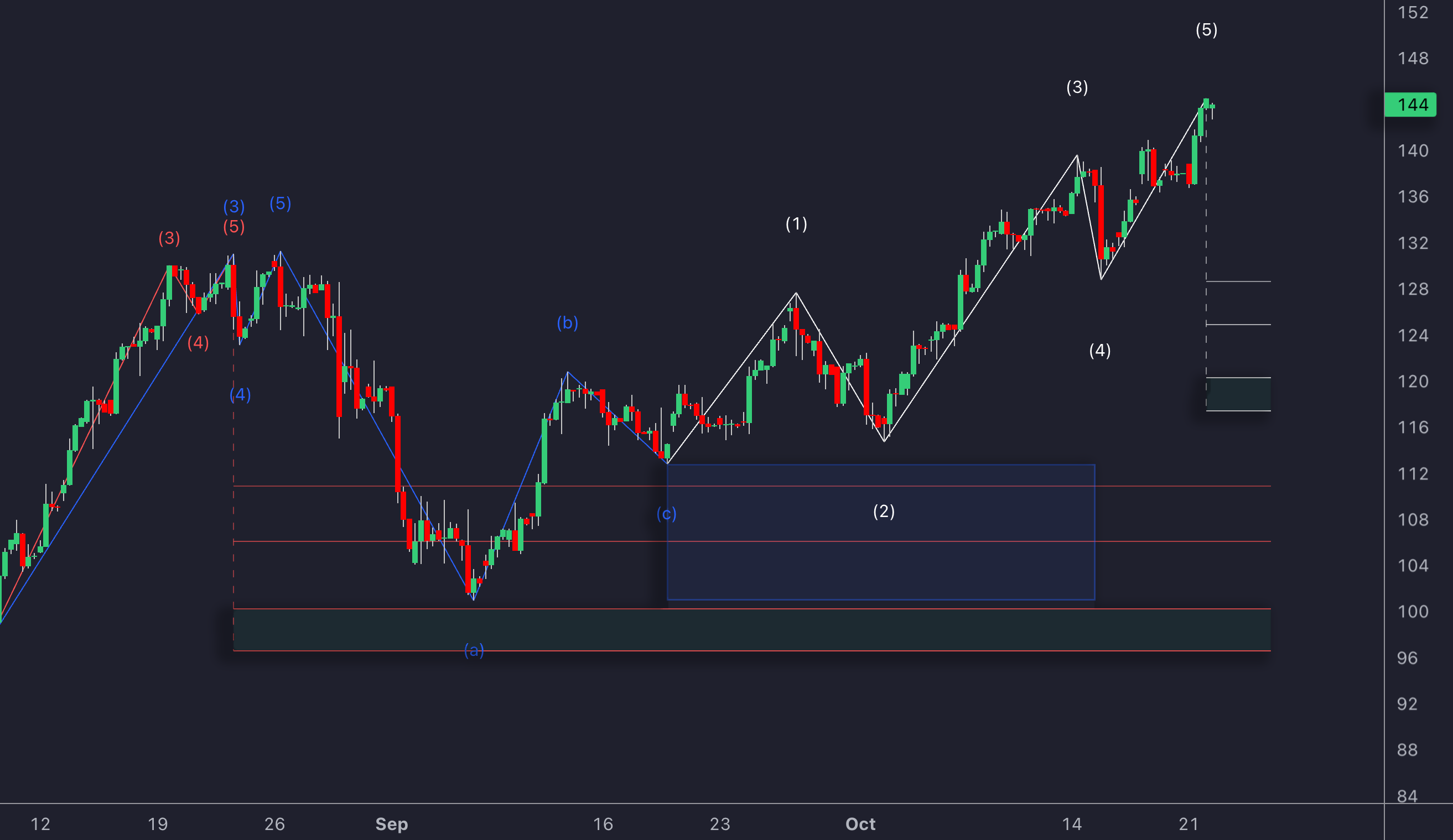
For more wave-based analysis resources, visit the LuxAlgo Library .
Next Steps for Beginners
Once you've chosen your analysis tools, it's time to dive in with a structured approach to learning.
Start with Simple Patterns
Begin by focusing on basic 5-wave impulses and 3-wave corrections. Use daily charts of major indices like the S&P 500 or currency pairs such as EUR/USD. These markets often show clearer wave patterns, making them ideal for practice [1] [2] [5].
Build a Regular Practice Routine
Consistency is key to mastering wave analysis. Here's a practical routine to follow:
- Analyze 2-3 assets daily across different timeframes.
- Log your wave counts to track progress over time.
- Evaluate weekly predictions to measure accuracy and refine your approach.
- Study one advanced concept each week to gradually improve your skills [7].
For risk-free practice, try using demo accounts on platforms like MetaTrader 4 or TradingView. These tools let you test your strategies without putting real money on the line [3] [4].
FAQs
After learning the basics of Elliott Wave Theory, beginners often have these questions:
What are the principles of the Elliott Wave Theory?
Elliott Wave Theory suggests that market movements follow a recurring 5-3 wave structure. In the direction of the trend, prices move in 5 waves (known as motive waves). Meanwhile, corrections against the trend occur in 3 waves (called corrective waves) [8]. This pattern repeats across various timeframes.
How do you read Elliott waves?
Start by identifying the numbered motive waves (1-5) that follow the trend and the lettered corrective waves (A-B-C). Wave 3 is usually the strongest, so keep an eye on its development. Check for completed patterns across different timeframes and monitor volume – higher during Wave 3 and lower during corrections [4] [8].
What is the 5-wave rule?
The 5-wave rule explains that trend movements consist of five distinct waves:
- Wave 1: The initial move, often subtle, with skepticism from market participants.
- Wave 2: A retracement of part of Wave 1.
- Wave 3: The strongest and most decisive wave.
- Wave 4: A corrective phase, often smaller in scale.
- Wave 5: The final push, typically with reduced trading volume [8].
What is the Elliott Wave 1-2-3-4-5?
This refers to a complete trend sequence where Waves 1, 3, and 5 drive prices forward, while Waves 2 and 4 act as temporary pullbacks before the trend continues [8].
How many Elliott Wave patterns are there?
There are two primary pattern types: motive waves (5-wave structures) and corrective waves (3-wave structures). Each has several variations that follow specific guidelines [8] [2]. These patterns help traders identify market trends and potential reversal points.
References
- Elliott Wave Principle Introduction
- Elliott Wave Principle on Wikipedia
- Elliott Wave Forecast
- Investopedia on Elliott Wave
- Elliott Wave Guide by EWO Trader
- Stokes Trades Elliott Wave Theory
- LuxAlgo Reversal Spotting
- LuxAlgo Price Action Concepts: Fibonacci Levels
- MotiveWave
- TradingView
- MetaTrader 4
- Forex Factory: Basics of Elliott Wave Theory


